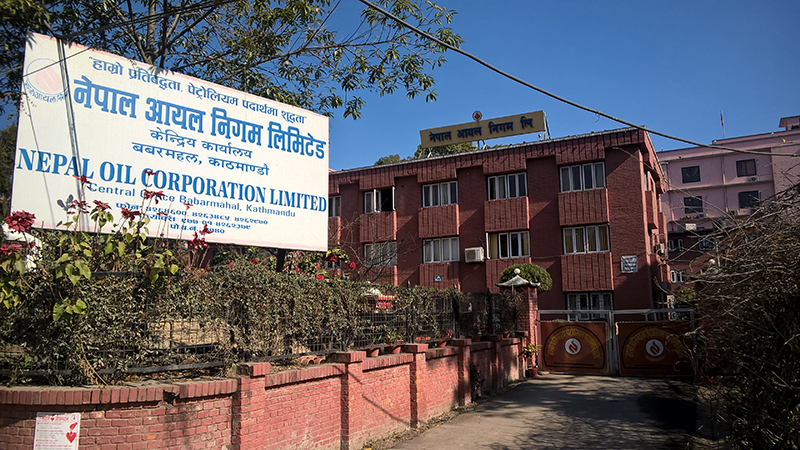NOC reluctant to reduce price even as international rates fall
Kathmandu, November 27
The state-owned Nepal Oil Corporation (NOC), which is often in a rush to jack up fuel price when the price of the commodity rises in the global market, is reluctant to bring the price down though crude oil price has taken a significant dip in the global market in recent weeks.
Crude oil price which stood at an average of $76 per barrel a month ago has come down to $60 per barrel today. However, this decline in global oil price has yet to benefit Nepali consumers following NOC’s reluctance to slash fuel price accordingly.
Meanwhile, the declining fuel price in the international market has helped NOC financially as the corporation’s monthly loss has come down to Rs 800 million from over Rs two billion monthly loss that the entity had been incurring a few weeks back.
As per rate sent by Indian Oil Corporation (IOC) for NOC as of second half of November, NOC books more than Rs 90 million fortnightly profit in petrol and above Rs 140 million profit in diesel. However, NOC has been incurring loss
in liquefied petroleum gas and aviation turbine fuel.
Sushil Bhattarai, acting deputy managing director of NOC, stated that even though the recent fall in oil price has
provided some relief to NOC by minimising its loss, NOC is not in a position to reduce the price immediately.
“As NOC could not raise fuel price when there was a global surge in oil price before Dashain due to the direction from the government and parliamentary panels not to add financial pressure on consumers during festivals, NOC’s loss increased significantly,” informed Bhattarai, adding that NOC will certainly adjust fuel price in the near future if the global price continues to fall.
Bhattarai further stated that NOC had to incur significant loss in recent months due to global surge in oil price, which had put the corporation under pressure to issue payments to IOC. “Hence, it is essential for NOC to book profit for the time being so as to ensure smooth supply of petroleum products in the market.”






